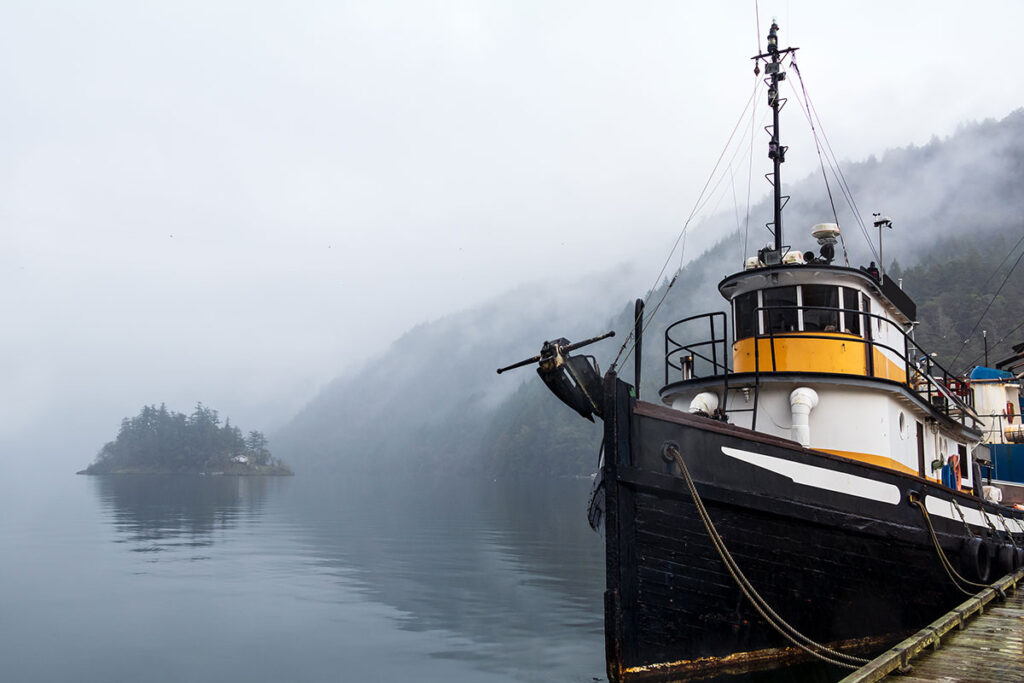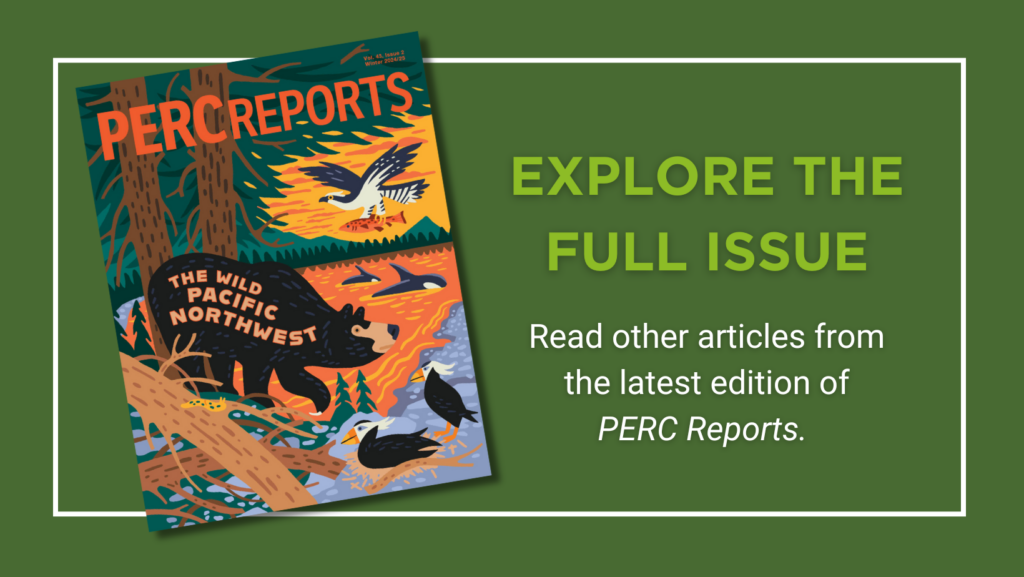
VANCOUVER, WASH.—In the waters of the Pacific Northwest, the challenges that divide commercial and recreational fishers mirror decades old rivalries that have played out in the Gulf of Mexico. There, the two sectors—each with their own political clout—have battled fiercely over a long-overfished prize: red snapper. Worth more than a quarter-billion dollars, the snapper fishery raises deceptively simple questions among harvesters and anglers alike: Is it a food source, or a game species? And who gets to reel in how many, from where, and when?
Up and down the West Coast, from California to Alaska, similar conflicts are increasingly arising over valuable species like salmon and halibut and groundfish. And once again, both sides feel entitled to a larger slice of the ocean’s bounty. Like the red snapper wars in the Gulf, the stakes in the Pacific Northwest go beyond who gets the bigger haul—they touch on the very meaning of conservation, responsibility, and how we balance competing human interests with the health of the ecosystem.
Both commercial and recreational fishers like to cast themselves as stewards of the sea. But beneath the surface, the competition for limited resources strains that shared identity. When you spend your days on a charter boat helping folks catch a fish big enough to tell stories about, it’s easy to feel the water stretching endless around you, full of promise. The vastness of the ocean tricks you into thinking no single rod and reel can make a dent in it. But up here, as in the Gulf, the truth is something harder to reckon with: The combined pressure from millions of rods and reels takes a toll, especially when those reels are targeting the most valuable, most fertile adults in the population.
In the Pacific Northwest, fish like salmon and halibut hold the same mythic status that red snapper and grouper do in the Gulf. These are the species that carry stories with them, not just for fishers, but for the cultures and communities tied to them. For Indigenous nations of the Pacific, fish in particular are more than a catch—they’re part of the cultural fabric. Yet, like in the Gulf, commercial fishers depend on the stocks for their livelihood, just as sport fishers crave the thrill of reeling in a monster catch for their freezer or wall. The more they’re chased, the more the competition heats up, and the more each side feels like they’re losing out.

What stands out in the Pacific Northwest is the scope and complexity of the conflict. Quite often, the competition isn’t just between commercial harvesters and sport fishers—it also includes treaties with Indigenous tribes that enshrine fishing rights, as well as environmentalists fighting overfishing in the age of habitat destruction, damming, and climate change. So, how do you manage a resource that so many feel they have a claim to, a resource that stretches across political boundaries, tribal jurisdictions, and international waters? The answer, as the Gulf experience suggests, might lie in systems like catch shares.
Catch shares offer a way out of the “derby” madness, where fishers race against the clock and each other to catch as much as possible before the (shrinking) season closes. This system, already showing its value with halibut in Alaska and spreading through fisheries along the Pacific Coast, assigns specific portions of the total allowable catch to individuals or groups. When fishers know what their share is, they’re no longer racing, no longer risking life and limb to beat the competition. They can focus on quality over quantity, on fishing smarter rather than harder, and on keeping the resource healthy so that there’s more to fish tomorrow. It’s a method that’s helped rebuild fish stocks in the Gulf—after more than a half century of rapid decline from overfishing, catch shares brought about a dramatic recovery in snapper populations—and could help reconcile tensions over fisheries here.
But it’s not just about the system; it’s about the data. Up here, where fish migrations stretch across vast and rugged terrain, good data is critical. Just as Gulf captains turned to smartphones and tech solutions like iAngler to track recreational catches, Pacific Northwest fisheries could benefit from similar innovations. After all, if you’re going to manage an invisible resource, which may depend on freshwater ecosystems as much as the ocean itself, you need to know how many fish are coming out of rivers, and how many get caught before they ever get the chance to spawn.

Technology offers hope in this regard. In the Gulf, recreational anglers are already logging their catches in real-time, giving scientists the data they need to make more informed management decisions. Imagine that same system applied in the Pacific Northwest, where every fish caught by a recreational angler is logged and tracked. Instead of just counting on rough dockside surveys, fishery managers would have a real-time snapshot of what’s coming out of the water and what’s going back in.
Still, the biggest hurdle to overcome, whether in the Gulf or the Pacific, is the mindset of the participants themselves, and their associations. Most fishers, whether commercial or recreational, want the same thing—a healthy, thriving ocean that can sustain them for generations to come. But getting to that point requires more than good intentions. It requires collaboration and compromise, something that’s been hard to come by in the past, but is slowly starting to take hold, especially as more fishers realize that the old ways just don’t work anymore.
In the Pacific Northwest, as in the Gulf, it’s not enough to just let everyone fend for themselves. Species like lingcod or halibut need real stewardship, and that means putting in place systems that hold everyone accountable, from the guy catching two salmon on his weekend trip to the commercial vessels hauling in hundreds of pounds at a time. It means breaking down the walls between commercial and recreational fishers, between state and federal regulations, and even between nations when the fish cross borders as easily as the currents carry them.
As the story of red snapper in the Gulf has shown, there’s hope for recovery. But it takes work. It takes commercial fishers who once fought tooth and nail against any regulation but now work within the system to keep the resource sustainable. And it takes recreational anglers who’ve learned to see beyond their personal catch to the bigger picture of what it means to have dominion over the fish of the sea.
Along the Pacific Coast, where the stakes are just as high, the solutions may well follow the same path—a shared dominion, where the ocean’s bounty is managed for the good of all, not just the lucky few who get to reel in the biggest fish.




